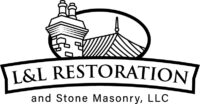How We Help with Your Restoration Project?
Services
Historic Restoration
What is Historic Restoration? Historic restoration or historic preservation is the act of preserving, conserving and protecting historical sites, buildings, monuments and other important emblem of the past. It is most important to retain the authenticity of historical objects or places in the process of restoration. This is done to ensure that whatever was present in the past is still the same in the present and will remain to be the same in the future. History of Historic Restorations Historical restoration began in England in the 17th century when historical statues, buildings and places were slowly being removed to give way to railways. It was in this century when the London and Birmingham Acts of 1833-1837 was enacted to stop historical sites destruction. Berkhamsted Castle was the first to benefit from this. In the mid-19th century, historical sites continued to deteriorate with visitors and land owners not being apprehended for destroying or taking parts of some historical buildings. The movement for historical restoration and preservation continued led by John Lubbock. With his campaigns, William Gladstone’s government passed the Ancient Monuments Protection Act of 1882. More legal actions were passed such as the Ancient Monuments Protection Act 1900 and Ancient Monuments Consolidation and Amendment Act 1913. A group called National Trust was also made aiming for protection of historical buildings and spaces. Types of Treatments In the act of restoring or preserving historical sites or objects, there are four types of treatments.- Preservation – This treatment ensures that historical buildings or objects maintain its authenticity, so restoration materials used should be carefully tested for accuracy of preservation.
- Rehabilitation – this type of treatment’s primary goal is to ensure that historical buildings or objects do not further deteriorate or be damaged. Hence, it allows alteration in the process to achieve its primary goal of rehabilitating the site.
- Restoration – This type focuses on restoring a particular property of historical buildings or objects at a specific point in the past. Other details is given less priority.
- Reconstruction – This type recreates historical buildings or objects that do not exist anymore. Materials to be used can also be new.

